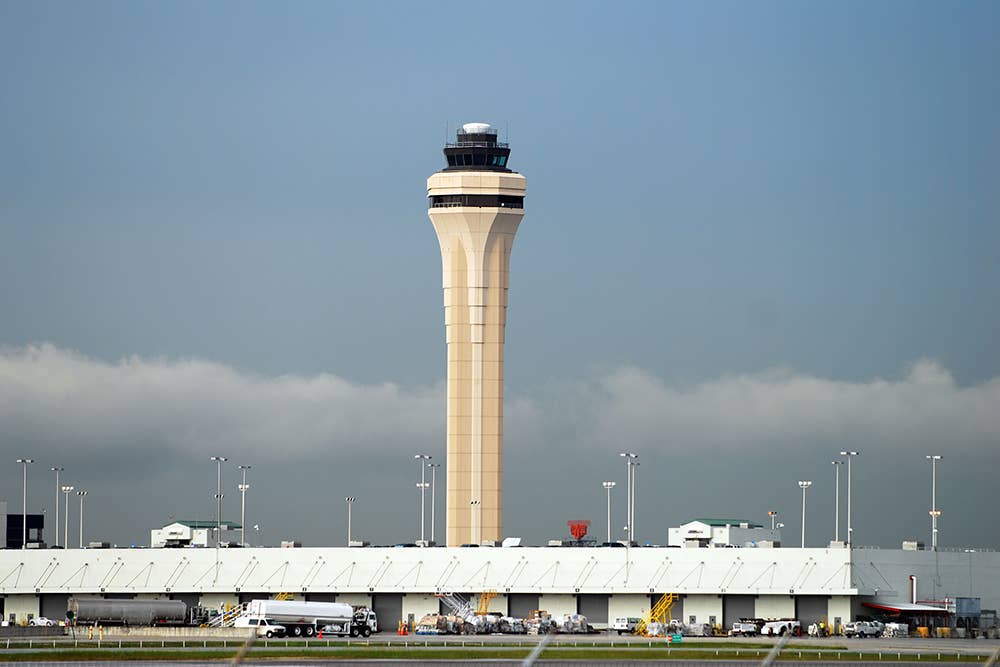‘We’re Just Treading Water’: Space Force Seeks Money, Personnel to Do Its Job
Chance Saltzman, chief of space operations, says the department needs to increase its funding and workforce as it takes on greater responsibilities.

U.S. Space Force Chief of Space Operations General Chance Saltzman delivers remarks at the Air and Space Forces Association Warfighter Symposium in Aurora, Colorado, on March 3. [Courtesy: U.S. Space Force/Emmeline James]
General Chance Saltzman, chief of space operations for the U.S. Space Force, is warning that the department is “just treading water” at a time when space is becoming a “warfighting domain.”
During an interview Wednesday, Saltzman told Lieutenant General David Deptula, dean of the Mitchell Institute for Aerospace Studies, that the Space Force needs more money and personnel to enable new offensive and defensive capabilities. He called American space superiority an imperative.
“Everybody is starting to recognize how much more critical space is becoming to our nation and to our national defense,” Saltzman said, “and in the exact same time frame, the Space Force is shrinking, and that's just a fundamental disconnect that I think we have to solve.”
Saltzman explained that other branches of the U.S. military have become increasingly dependent on the capabilities the Space Force provides, such as a network of spy satellites. That has made those assets a “juicy target” for adversaries, he said, who are developing their own capabilities. China, for example, unveiled its Near-Space Command in 2023 and reportedly practiced “dogfighting” in space using satellites this month.
“What I think we're looking at is a fundamental shift, a step-function shift in space capabilities,” Saltzman said.
To achieve space superiority, Saltzman said the Space Force will focus on three areas: improving situational awareness for its forces, adding defensive capabilities for its assets, and counter-space, which he described as the ability to “deny, degrade, disrupt, and even destroy—if we have to—the capabilities that an adversary like the [People’s Republic of China] would use against us.”
That’s a tall order. And with other projects—such as President Donald Trump’s proposed “Golden Dome”—eating into the budget, there may not be enough money to go around.
Earlier this month, Congress passed a continuing resolution (CR) that set the Space Force budget for fiscal year 2025 at $28.7 billion—about $800 million less than requested. The CR runs through September 30. Defense Secretary Pete Hegseth in February ordered military services and defense agencies to propose “potential offsets” for 8 percent of the Pentagon’s budget—about $50 billion—over the next five years.
Saltzman said the Space Force is evaluating cuts to “lowest priority” programs. Per a Pentagon statement, the money is intended to flow to “programs aligned with President Trump’s priorities” beginning in fiscal year 2026.
“I'm not uncomfortable with this reprioritization drill in the FY 26 budget,” said Saltzman. “The FY 25 budget, the year long CR, is problematic…The bottom line is our appropriated money is less than we had in 2024. So we are literally shrinking in resources as a Space Force, so we have less to do more with, and so that's a concern. And it's starting to be a trend.”
Even accounting for inflation, the Space Force budget has shrunk in real dollar terms and takes up only about 3 percent of the Pentagon’s budget. Saltzman said the department is working with the same baseline funding it had in the fall of 2023, when fiscal year 2024 began. If the next budget proposal gets hit with another CR, progress could be stifled.
“You're talking about more than two years where you're operating off the same basic year’s baseline. That is stagnant,” Saltzman said. “And in the face of an adversary who is not stagnant, I'm worried that we're not going to be able to keep pace.”
Saltzman was also critical of the White House’s “salami slice” approach to cuts, wherein a small amount of money is taken across each portfolio. That strategy might work with a robust budget, he said, but even those small cuts could harm the Space Force.
“If you delay all the programs, you really don't have the capability you need, and you put readiness in jeopardy,” Saltzman said.
The Space Force is also not immune to the Department of Government Efficiency’s efforts to downsize the federal workforce, which have already affected agencies such as the FAA and NASA. Saltzman said the Space Force is in a period of “managed growth” and is looking to add as many personnel as its training pipeline allows.
“We are caught up in that as well. We're not immune to that, and that's a priority that this administration is making,” Saltzman said. “What we're doing is we're saying, given the workforce we have, how are we optimizing? Are they the right people in the right jobs, in the right place to do what we need?”
Saltzman remains “very hopeful” that “a lot of that money will come back into our budget, and potentially, with initiatives like Golden Dome, we'll even get more money and more resources.” Hegseth—whom Saltzman said characterized space as the most critical domain in modern warfare—will make the call on which projects to scale back.
Ultimately, he said, an investment in the Space Force is an investment in national security.
“This is a uniquely military function, and the other services are rapidly coming to terms with the fact that if the Space Force doesn't do its job, then the other services are not going to be able to do their job, certainly not as effectively,” Saltzman said. “It's a team sport, and we are just as much a part of that team as anybody else.”
Like this story? We think you'll also like the Future of FLYING newsletter sent every Thursday afternoon. Sign up now.

Sign-up for newsletters & special offers!
Get the latest FLYING stories & special offers delivered directly to your inbox






